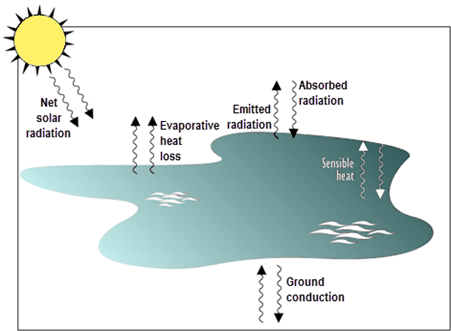Ask Dr. ALOHA: Using CAMEO Tools for RMP and EPCRA Hazard Analyses, Part 3
How is ALOHA Different than the EPCRA Green Book?
The EPCRA "Green Book" provides a method that planners can use to quickly determine the relative hazards of chemicals stored in a community, as required by the Emergency Planning and Community Right-to-Know Act (EPCRA). The EPCRA Green Book method uses simple calculations to provide an initial assessment of the hazards based on just a few pieces of information about the stored chemicals. (The CAMEO Data Manager Screening & Scenarios tool implements the EPCRA Green Book procedures.) Once the worst hazards are identified, planners may analyze those locations more thoroughly using a hazard model like ALOHA.
Note: Published in 1987, the EPCRA Green Book is more properly known as Technical Guidance for Hazards Analysis: Emergency Planning for Extremely Hazardous Substances. You can download the EPCRA Green Book from the Environmental Protection Agency site.
For a given release scenario, if you compare the EPCRA Green Book estimate for vulnerable zone distance and the ALOHA estimate for threat zone length, you will find that they are often quite different. The primary reason for this is because the ALOHA model uses more complex equations to give you better estimates of the area affected by a chemical release. (To use ALOHA, you need to specify more information about the potential release than you do in the EPCRA Green Book procedures.) This page in the series discusses several reasons why ALOHA's calculations differ from the EPCRA Green Book recommendations.
Liquid Evaporation
For any puddle evaporation scenario, you're likely to see significant differences in your results for two reasons. First, ALOHA uses a more complex method to model evaporation, taking into account many factors that affect evaporation. For example, ALOHA considers the heat exchanged between a puddle and its environment (as seen below), calculating changes in the puddle temperature over time and how this affects the evaporation rate. The EPCRA Green Book method does not account for these factors and assumes the puddle temperature remains constant at 68°F (20°C).

Second, the EPCRA Green Book and ALOHA make different assumptions about the size of the puddle formed by a spilled chemical. This is significant because the larger a puddle's area, the greater its evaporation rate. ALOHA expects a puddle of spilled liquid to spread out until its depth averages 0.5 centimeter (the puddle will then become thinner as it evaporates). In contrast, the EPCRA Green Book assumes that an evaporating puddle will spread to a depth of 1.0 centimeter. So, given the same mass of spilled liquid, ALOHA expects the area of an evaporating puddle to be twice as large.
Atmospheric Dispersion
The toxic threat from any chemical—whether it is released as a gas or evaporates from a puddle—will depend on how the chemical disperses as it travels downwind. A cloud that is heavier than air will disperse differently than one that is neutrally buoyant (that is, about the same density as air).
The EPCRA Green Book method assumes that all chemicals are neutrally buoyant and dispersed passively by wind and atmospheric turbulence. In addition to modeling neutrally buoyant gases, ALOHA also models heavy gases—and ALOHA will determine the model to use based on the chemical and the release conditions. However, even for neutrally buoyant gases, there are still some cases where the predictions from ALOHA and the EPCRA Green Book will differ.
For neutrally buoyant gases, both ALOHA and the EPCRA Green Book use Gaussian formulas to estimate downwind distance to a specific concentration—but there are some differences:
- The EPCRA Green Book method uses tables that are based on a Gaussian model where the release is constant and continuous. The Gaussian model that's incorporated in ALOHA is more complex than the EPCRA Green Book one. ALOHA includes equations to account for release rates that change over time and for dispersion in the along-wind direction that is caused by processes such as wind shear.
- For urban areas, ALOHA uses a different set of Briggs dispersion coefficients (numbers which describe the vertical and crosswind extent of a dispersing gas cloud). So, ALOHA's threat zone estimates can be much longer than those in the EPCRA Green Book's urban vulnerable zone tables.
Cut-off Limits and Chemicals with Very Low Volatility
Here are two final examples of the differences between ALOHA and the EPCRA Green Book procedures:
- ALOHA has a 6 mile (10 kilometer) cut-off limit: long threat zones are truncated at that point and ALOHA will not estimate downwind concentrations at distances beyond the limit. The EPCRA Green Book uses a different cut-off distance: 10 miles (16 kilometers).
- ALOHA's chemical library does not contain chemicals with very low vapor pressures, because these substances are not expected to be volatile enough to be air dispersion hazards. In contrast, the EPCRA Green Book describes how to estimate dispersion of any substance that has been designated an Extremely Hazardous Substance—even if they have very low volatility (including liquids such as sulfuric acid and solids such as cobalt and lindane).
Questions: Contact us with questions, comments, or suggestions about ALOHA.
Go back to the Ask Dr. ALOHA overview.
